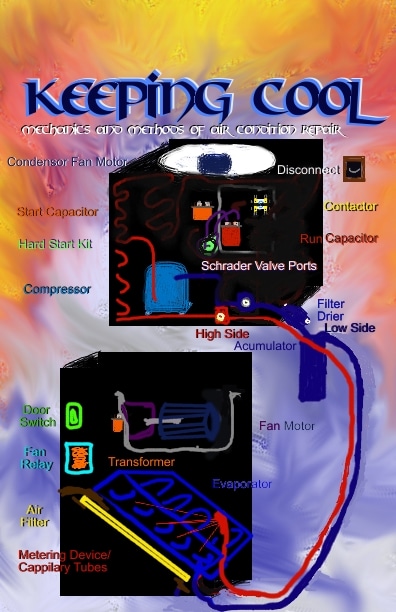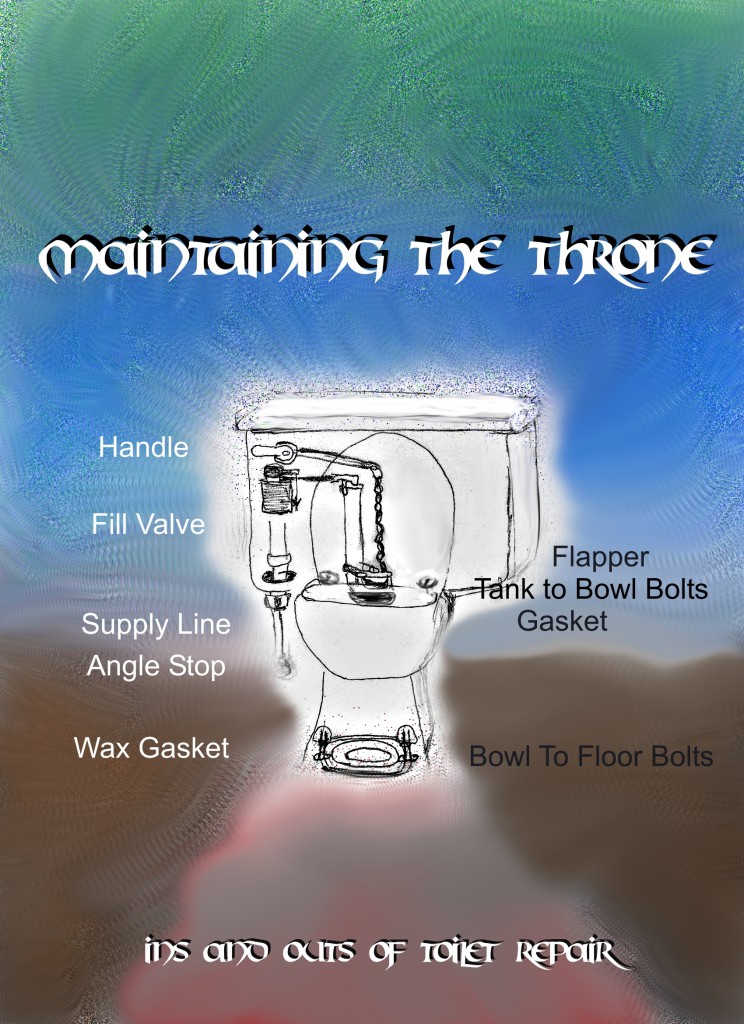Clean Condensor Coils.
First pull the A/C disconnect and discharge the capacitor. Next rinse the coils with a garden hose and hand sprayer (make sure the spray is not too strong to avoid bending the condenser fins) starting from the inside fins thru the lid, spray as much of the dirt to the outside. Avoid getting the fan condenser motor wet but do rinse off the blades as needed. Next clean off the outside of the fins with the spray spraying straight but angle downward. Avoid spraying sideways to prevent bending the fins. Next apply the coil cleaner with a garden sprayer or by following manufacturer’s recommendations. Wait manufacturers recommended time (usually about five minutes) and rinse the coils inside and out thoroughly.
Clean Evaporator Coils.
A no rinse evaporator coil cleaner is the easiest way to clean the evaporator coil. Spray it on the coils turn on the evaporator coil. Reset the panel door turn on the A/C and wait the manufacturers recommended time (usually between five and thirty minutes).
Replace Air Filters.
Replace filters every three months and every month if possible during higher use seasons. If you or a family member suffer from allergies use a HEPA filter. HEPA stands for high efficiency particle arrestor. The HEPA filter catches smaller particles so your noses and lungs don’t have to.
Clear Condensate Pans, Drains, and Lines.
Use a wet dry vacuum to vacuum out the pan and lines. On some systems you may need to hook up a smaller hose to the wet dry suction to get better access to the pan. You can make a quick rig for this with a small length of plastic hose and duct tape. Just insert two to three foot length of hose into wet dry vacuum suction hose end and duct tape in place wrapping the tape around the union covering all gaps (makeshift reducer coupling).
Add Condensate Tablets to Drain Pans.
Good condensate pan tablets contain rust and mold inhibitors. They also contain an anti-coagulant that keeps the dirt from clumping together and clogging your condensate drain. They will help preserve the life of your condensate drain pan as well as help keep the air you and your guests are breathing healthier and better smelling.
Tape all Areas of Air Leakage at Air Handler.
Apply HVAC foil tape or other HVAC rated tape to seal any open joints. Use an old dollar bill or a paper towel to locate any air leakage whether blowing out or sucking in. Hold the dollar bill or paper by one end and see if the other end is affected, either sucked towards or blown away from the air handler when you move it around the system. That is a one dollar or less air leak locator. Seal off any leakages with tape to improve the efficiency of the system.
Check for Fifteen to Twenty Degree Split.
Turn on the system and wait five to ten minutes for the pressures to equalize. Test the temperature going in the intake vent and then test the temperature coming out of one of the registers. If you have two thermometers, set one up at each, and take your readings. If your reading coming out of the register is fifteen to twenty degrees cooler then the air being sucked into the intake then your refrigerant charge is ok. If not then your system will need to be charged and the refrigerant leak located (most often at a Schrader valve, I cover this and many other factors in my book Kung Fu Maintenance). If you are not EPA certified you will need the services of a qualified HVAC technician.
~~~ Stay Cool ~~
~~~~~~ Kung Fu Maintenance ~~~~~

